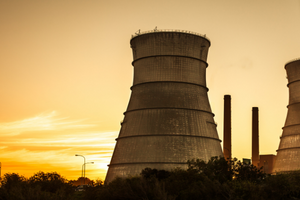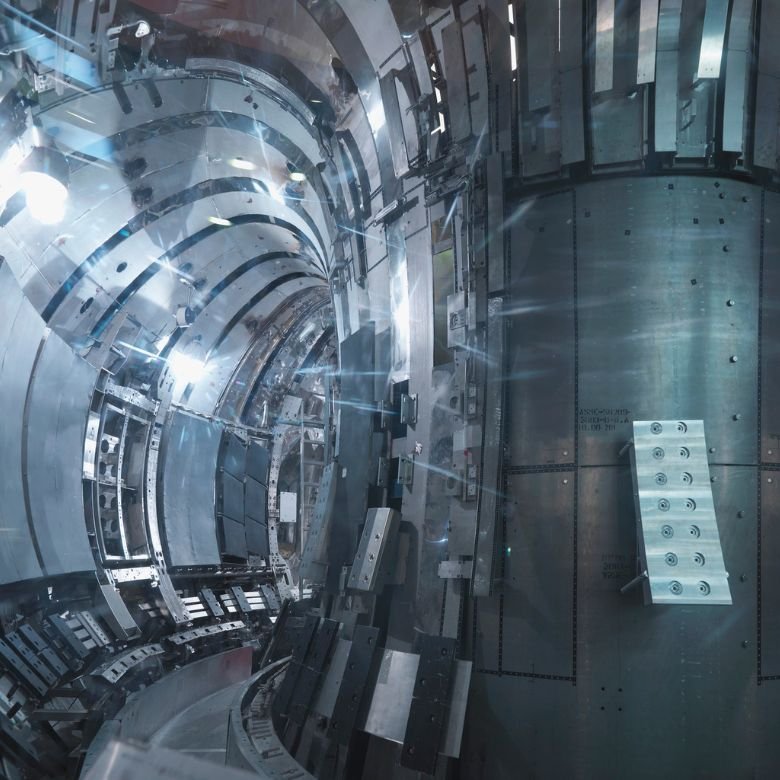Obtaining electricity from nuclear fission processes is undoubtedly an important aspect of modern power engineering. A nuclear reactor is a device in which a controlled nuclear reaction is carried out. Reactors are the main equipment of nuclear power plants where nuclear energy is converted into electricity. Reactors are also one of the propulsion elements of ships and submarines.

Basics of classification of nuclear reactors
Nuclear reactors can be divided according to a number of criteria. Here are some of them:
- Energy of fission-causing neutrons:
- thermal reactor, uses thermal neutrons, or at least with energies below about 100 eV,
- a reactor operating on fast neutrons with energies mainly in the range of 50 to 100 keV.
- Nuclear fuel (in the form of metal, carbides or oxides, ceramics):
- natural uranium reactor
- enriched uranium reactor
- reactor operating on 239 232 Pu,
- reactor operating on 232 Th (more precisely 233U).
- Nuclear fuel location:
- homogeneous reactor,
- heterogeneous reactor.
- Moderator:
- water reactor,
- heavy water reactor,
- beryllium moderator reactor,
- graphite reactor,
- reactor without a moderator (fast).
- Coolant
- reactor cooled by water or other liquid,
- gas-cooled reactor (air, helium, CO2, dissociating gas),
- liquid metal cooled reactor (liquid sodium and its alloys, potassium, bismuth).
Please note that the above divisions are not the only ones. Additionally, classification can be distinguished due to the material of the sleeves in which the fuel is enclosed, the degree of fuel enrichment, the type of construction of fuel elements, and others. Constant technological development ensures the emergence of new solutions and makes some of the mentioned reactors only of historical importance.
Reactor generations
The first generation of nuclear reactors included all those that were created in the 1950s and 1960s. At the same time, they were prototypes for Generation II reactors. The first nuclear reactors had designs taken over from military programs. During the Second World War, they were mainly used to produce plutonium. The first generation reactors were characterized by the fact that they had the ability to reload the fuel during the reactor operation, without having to shut it down. They were graphite reactors. Natural or slightly enriched uranium was used as fuel. Water or carbon dioxide were the coolants.
The second generation of nuclear reactors (built mainly from 1970 to 1990) has set itself the goal of producing electricity as efficiently as possible. The currently widespread PWR or BWR reactors belong to the second generation.
At the end of the 1980s, research began on the introduction of a number of changes and improvements in the construction and operation of nuclear reactors to enter the third generation. This next generation includes nuclear reactors that have been modified and improved to increase safety as well as reduce the cost of building and operating the power plant. The modern, competitive energy market means that the solutions introduced with the third generation of nuclear reactors are now running out.
The fourth generation of nuclear reactors include a completely innovative approach to the acquisition of nuclear energy. It takes into account methods that differ from currently used solutions. Many of them are small and medium power water reactors with original designs.
Nuclear reactors – division due to their construction
Tank reactors
- Pressurized Water Reactor (PWR)
These are the most commonly used reactors for energy purposes. The PWR reactor core is placed inside a pressurized tank with a water pool. Water is both a coolant and a moderator. Uranium dioxide pellets enclosed in a zirconium (or stainless steel) jacket are the fuel of the PWR reactor. This reactor has two circuits. The primary circuit is water, which washes the fuel rods and transfers heat to the steam generator. After cooling down, it returns to the reactor. In the secondary circuit, the steam generated in the steam generator (heated by the primary circuit) moves the reactor turbines.
- VVER reactors (vodo-vodyanoi enyergeticheskiy reaktor)
These are medium and high-power PWR reactors, designed in the USSR. Their construction is not much different from the western ones. They feature four layers of leak protection. Two basic types of VVER reactors were produced: VVER-440 and VVER-1000.
- Boiling Water Reactor (BWR)
In the case of this reactor, not water, but steam is the coolant as well as the operating medium. Water in the core is brought to the boiling point, and at the output of the reactor we have saturated steam, which drives a steam turbine. BWR type reactors have only one circuit.
Channel reactors
- CANDU reactors (Canadian Deuterium Uranium)
The CANDU reactor is an example of a heavy water reactor – heavy water, D2O, is both the coolant and the moderator. Its task is to lower the energy of neutrons. Natural uranium (without enrichment) is used as fuel. The CANDU reactor was originally designed and built in Canada as the first commercial heavy water reactor.
- RBMK reactors (Reaktor Bolshoy Moshchnosti Kanalniy)
RBMK is a water-boiling reactor. Graphite is used as a moderator. The water receives heat and, after turning into steam, turns the turbines. In this reactor, it is not water, but graphite, that moderates the fast neutrons. Natural uranium without enrichment is used as fuel. Although the RBMK reactor is one of the most economical, it has a number of design flaws.

Nuclear reactors – division by application
Power reactors – their main task is to convert nuclear energy into electricity. They are used in commercial power plants.
Research/training reactors – research and scientific works are carried out in them. Research reactors allow to conduct experiments on the structure of solids and research on materials and nuclear fuels for power reactors.
Reactors for military purposes – in the military, nuclear reactors have been used to produce plutonium for the armaments industry.
Propulsion reactors – one of the applications of nuclear energy is propulsion of ships or submarines. Specially designed propulsion reactors are necessary for this purpose.
Heating reactors – they are used to generate the necessary amount of heat for heating purposes in nuclear heating plants.
High-temperature reactors – in high-temperature reactors, heat is generated, which is then used for technological purposes.
Reactors for special purposes – these types of reactors are mainly used by medical or selected industrial sectors. They produce radioisotopes for specific applications.